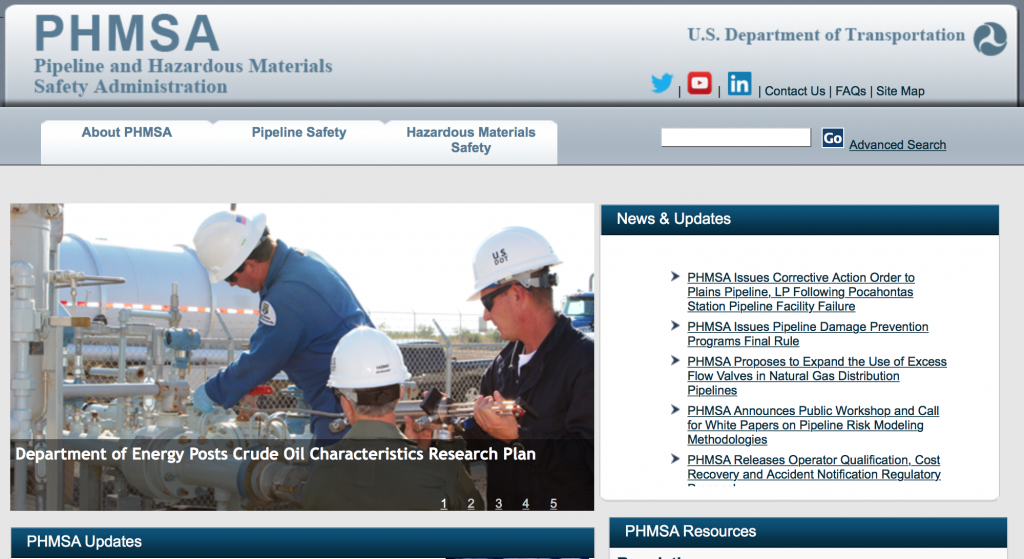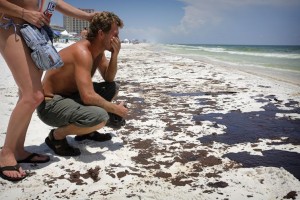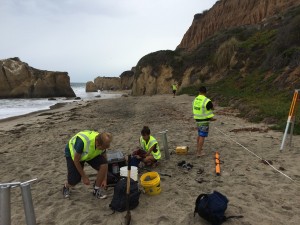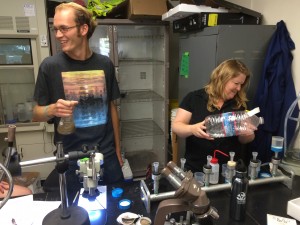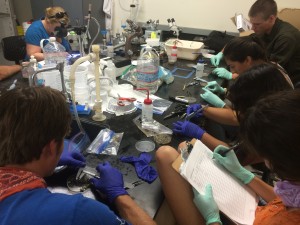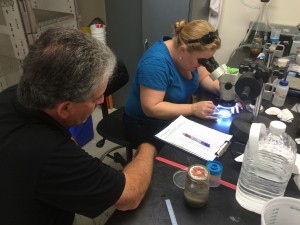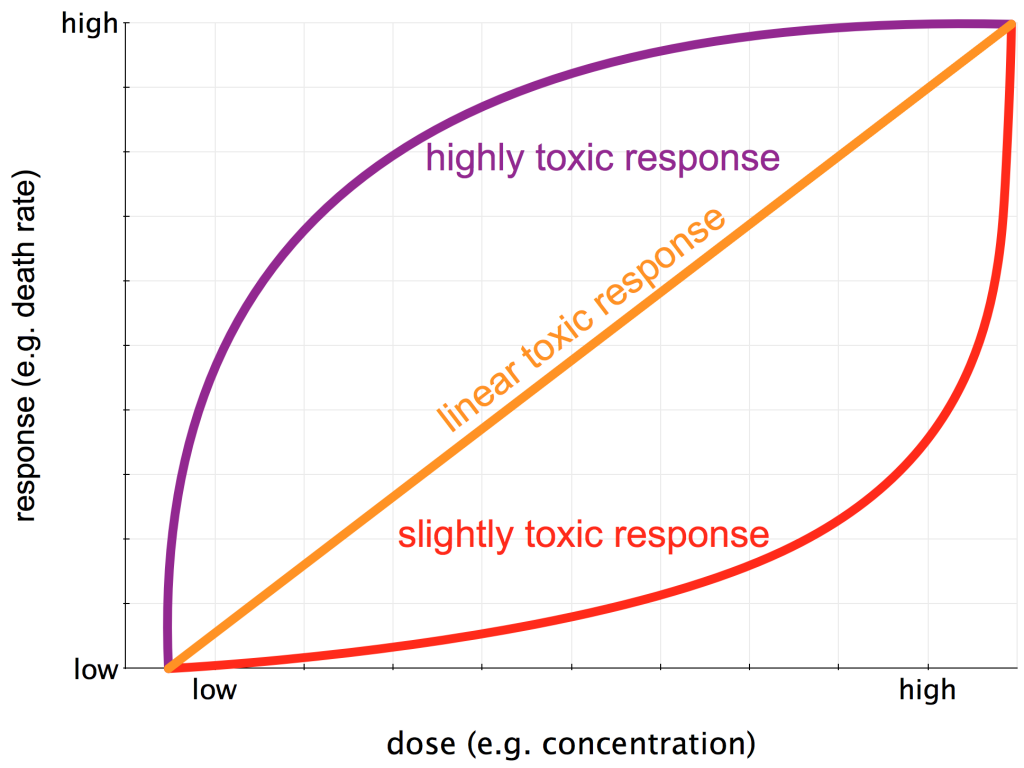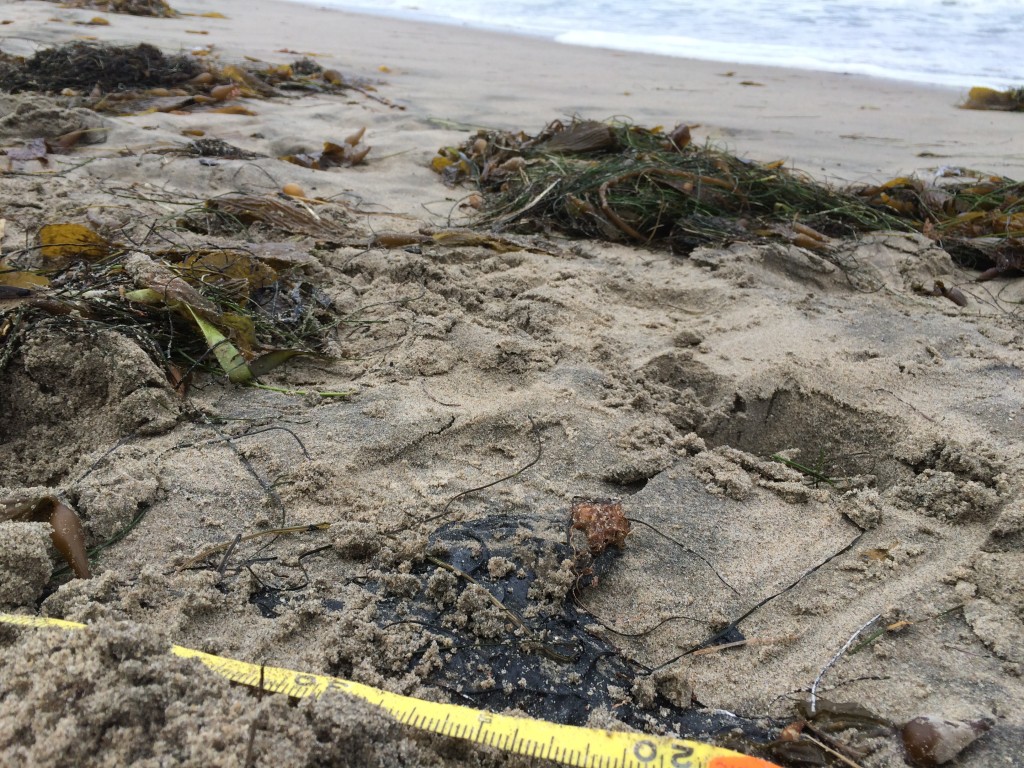| No Name Bayou Marsh Creation |
NMFS |
Marsh Creation |
Cameron |
28253136 |
497 |
| Shell Beach South Marsh Creation |
EPA |
Marsh Creation |
St. Bernard |
28101518 |
344 |
| New Orleans Landbridge Shoreline Stablization |
USFWS |
Marsh Creation |
Orleans |
17549317 |
167 |
| West Fourchon Marsh Creation & Nourishment |
NMFS |
Marsh Creation |
Lafourche |
29405764 |
304 |
| Caminada Headlands Back Barrier Marsh Creation |
EPA |
Marsh Creation |
Lafourche |
31034094 |
181 |
| Bayou Grande Cheniere Marsh & Ridge Restoration |
USFWS |
Marsh Creation |
Plaquemines |
29104945 |
264 |
| South Grand Chenier Marsh Creation – Baker Tract |
NRCS |
Marsh Creation |
Cameron |
25441833 |
393 |
| Island Road Marsh Creation & Nourishment |
NMFS |
Marsh Creation |
Terrebonne |
39185267 |
312 |
| Bayou Dupont Sediment Delivery |
EPA |
Marsh Creation |
Jefferson, Plaquemines |
38279163 |
383 |
| Terracing & Marsh Creation South of Big Mar |
USFWS |
Marsh Creation, Terracing |
Plaquemines |
23692705 |
303 |
| Cameron Meadows Marsh Creation and Terracing |
NMFS |
Marsh Creation, Terracing |
Cameron |
27685820 |
264 |
| North Catfish Lake Marsh Creation |
NRCS |
Marsh Creation |
Lafourche |
30385887 |
401 |
| Northwest Turtle Bay Marsh Creation |
USFWS |
Marsh Creation |
Jefferson |
23198757 |
407 |
| Oyster Bayou Marsh Creation and Terracing |
NMFS |
Marsh Creation, Terracing |
Cameron |
29781355 |
433 |
| LaBranche Central Marsh Creation |
NRCS |
Marsh Creation |
St. Charles |
42159208 |
731 |
| Cole’s Bayou Marsh Restoration |
NMFS |
Marsh Creation, Hydrologic Restoration |
Vermilion |
26631224 |
398 |
| Kelso Bayou Marsh Creation |
NRCS |
Marsh Creation |
Cameron |
16632765 |
274 |
| Cameron-Creole Watershed Grand Bayou Marsh Creation |
USFWS |
Marsh Creation |
Cameron |
23405612 |
476 |
| Coastwide Vegetative Planting |
NRCS |
Vegetative Planting |
|
12689725 |
779 |
| Bayou Bonfouca Marsh Creation |
USFWS |
Marsh Creation |
St. Tammany |
23875866 |
478 |
| Terrebonne Bay Marsh Creation-Nourishment |
USFWS |
Marsh Creation |
Terrebonne |
27414401 |
353 |
| Cheniere Ronquille Barrier Island Restoration |
NMFS |
Barrier Island Restoration |
Plaquemines |
43828285 |
308 |
| Freshwater Bayou Marsh Creation |
NRCS |
Marsh Creation |
Vermilion |
25523755 |
279 |
| LaBranche East Marsh Creation |
NRCS |
Marsh Creation |
St. Charles |
32323291 |
715 |
| Lost Lake Marsh Creation and Hydrologic Restoration |
USFWS |
Marsh Creation |
Terrebonne |
34626728 |
452 |
| Grand Liard Marsh and Ridge Restoration |
NMFS |
Marsh Creation |
Plaquemines |
42579616 |
370 |
| Bertrandville Siphon (Deauthorized) |
EPA |
Freshwater Diversion |
Plaquemines |
22578278 |
1613 |
| Cameron-Creole Freshwater Introduction |
NRCS |
Freshwater Diversion |
Cameron |
12787044 |
473 |
| Non-Rock Alternatives to Shoreline Protection Demonstration |
NRCS |
Demonstration |
|
6108699 |
0 |
| Central Terrebonne Freshwater Enhancement |
NRCS |
Hydrologic Restoration |
Terrebonne |
16640120 |
233 |
| West Pointe a la Hache Marsh Creation |
NRCS |
Marsh Creation |
Plaquemines |
16136639 |
203 |
| Bayou Dupont Marsh and Ridge Creation |
NMFS |
Marsh Creation |
Jefferson |
38539615 |
186 |
| South Lake Lery Shoreline and Marsh Restoration |
USFWS |
Outfall Management |
|
32466987 |
409 |
| Bio-Engineered Oyster Reef Demonstration |
NMFS |
Demonstration |
|
2291276.22 |
0 |
| Sediment Containment System for Marsh Creation Demonstration |
NRCS |
Demonstration |
|
1163343 |
0 |
| Alligator Bend Marsh Restoration and Shoreline Protection (Inactive) |
NRCS |
Marsh Creation |
Orleans |
29891722 |
181 |
| Madison Bay Marsh Creation and Terracing |
NMFS |
Marsh Creation |
Terrebonne |
38798788 |
334 |
| West Belle Pass Barrier Headland Restoration |
NMFS |
Marsh Creation, Barrier Headland |
Lafourche |
42250417 |
305 |
| Enhancement of Barrier Island Vegetation Demonstration |
EPA |
Demonstration, Vegetative Planting |
|
919599 |
0 |
| Lake Hermitage Marsh Creation |
USFWS |
Marsh Creation |
Plaquemines |
38300898 |
447 |
| Venice Ponds Marsh Creation and Crevasses (Inactive) |
EPA |
Marsh Creation, Water Diversion |
Plaquemines |
1074522 |
318 |
| South Shore of the Pen Shoreline Protection and Marsh Creation |
NRCS |
Shoreline Protection |
Jefferson |
21639574 |
106 |
| East Marsh Island Marsh Creation |
EPA |
Marsh Creation |
Iberia |
23025451 |
169 |
| Shoreline Protection Foundation Improvements Demonstration |
COE |
Demonstration, Shoreline Stabilization |
Vermilion |
1055000 |
0 |
| Goose Point/Point Platte Marsh Creation |
USFWS |
Marsh Creation |
St. Tammany |
14558123.48 |
436 |
| Whiskey Island Back Barrier Marsh Creation |
EPA |
Barrier Island Restoration, Marsh Creation |
Terrebonne |
30414086 |
272 |
| Bayou Dupont Sediment Delivery System |
EPA |
Marsh Creation, Dredged Material |
Jefferson, Plaquemines |
27702940.56 |
326 |
| Floating Marsh Creation Demonstration |
NRCS |
Marsh Creation, Demonstration |
Jefferson, Lafourche, Plaquemines, St. Charles, St. Mary, Terrebonne, St. John the Baptist |
1080891 |
0 |
| South White Lake Shoreline Protection |
COE |
Shoreline Protection |
Vermilion |
14466980.83 |
844 |
| Barataria Basin Landbridge Shoreline Protection, Phase 4 |
NRCS |
Shoreline Protection |
Jefferson |
17709216.57 |
256 |
| Pass Chaland to Grand Bayou Pass Barrier Shoreline Restoration |
NMFS |
Barrier Island Restoration |
Plaquemines |
40710723.33 |
263 |
| Dedicated Dredging on the Barataria Basin Landbridge |
USFWS |
Marsh Creation |
Jefferson |
16286153 |
242 |
| Little Lake Shoreline Protection/ Dedicated Dredging Near Round Lake |
NMFS |
Marsh Creation, Shoreline Protection |
Lafourche |
29442353.14 |
713 |
| Barataria Barrier Island Complex Project: Pelican Island & Pass La Mer |
NMFS |
Barrier Island Restoration |
Plaquemines |
77290188 |
334 |
| Holly Beach Sand Management |
NRCS |
Shoreline Protection |
Cameron |
14130232.86 |
330 |
| Coastwide Nutria Control Program |
NRCS |
Herbivory Control |
Ascension, Calcasieu, Cameron, Iberia, Jefferson, Lafourche, Orleans, Plaquemines, St. Bernard, St. Charles, St. Mary, St. Tammany, Terrebonne, Vermilion, St. James, St. John the Baptist, St. Martin, Assumption, Jefferson Davis, Acadia, Lafayette, West Baton Rouge, East Baton Rouge, Iberville, Livingston, Tangipahoa |
68040614.41 |
14963 |
| South Grand Chenier Marsh Creation |
USFWS |
Hydrologic Restoration |
Cameron |
22623346 |
414 |
| Grand Lake Shoreline Protection |
NRCS |
Shoreline Protection |
Cameron |
10055616 |
45 |
| West Lake Boudreaux Shoreline Protection and Marsh Creation |
USFWS |
Marsh Creation, Shoreline Protection |
Terrebonne |
19449961.1 |
277 |
| Ship Shoal: Whiskey West Flank Restoration (Inactive) |
EPA |
Barrier Island Restoration |
Terrebonne |
3742053 |
195 |
| Raccoon Island Shoreline Protection/Marsh Creation |
NRCS |
Marsh Creation, Shoreline Protection |
Terrebonne |
20114792 |
71 |
| Hydrologic Restoration and Vegetative Planting in the des Allemands Swamp |
EPA |
Freshwater Diversion |
St. James |
8263731 |
941 |
| Delta Management at Fort St. Philip |
USFWS |
Sediment and Nutrient Trapping, Outfall Management |
Plaquemines |
2739727.47 |
267 |
| East Sabine Lake Hydrologic Restoration |
USFWS |
Hydrologic Restoration |
Cameron |
6049989.79 |
225 |
| Rockefeller Refuge Gulf Shoreline Stabilization |
NMFS |
Shoreline Protection |
Cameron |
28082507 |
256 |
| Grand-White Lakes Landbridge Protection |
USFWS |
Shoreline Protection |
Cameron |
8584333.73 |
213 |
| Lake Borgne Shoreline Protection |
EPA |
Shoreline Protection |
St. Bernard |
27520807.84 |
165 |
| GIWW Bank Restoration of Critical Areas in Terrebonne |
NRCS |
Shoreline Protection |
Terrebonne |
13022246 |
64 |
| North Lake Mechant Landbridge Restoration |
USFWS |
Marsh Creation, Vegetative Planting, Dredged Material |
Terrebonne |
36734873 |
604 |
| Terrebonne Bay Shore Protection Demonstration |
USFWS |
Demonstration, Shoreline Protection |
Terrebonne |
2718818.22 |
0 |
| Barataria Basin Landbridge Shoreline Protection, Phase 3 |
NRCS |
Shoreline Protection |
Jefferson |
46231597 |
264 |
| Black Bayou Culverts Hydrologic Restoration |
NRCS |
Hydrologic Restoration |
Cameron |
16399059 |
540 |
| GIWW – Perry Ridge West Bank Stabilization |
NRCS |
Shoreline Protection |
Calcasieu |
2204708.74 |
83 |
| Freshwater Introduction South of Highway 82 |
USFWS |
Hydrologic Restoration |
Cameron |
6197671.42 |
296 |
| Chandeleur Islands Marsh Restoration |
NMFS |
Barrier Island Restoration |
Plaquemines, St. Bernard |
839927.3 |
220 |
| New Cut Dune and Marsh Restoration |
EPA |
Barrier Island Restoration |
Terrebonne |
10652277.27 |
102 |
| South Lake Decade Freshwater Introduction |
NRCS |
Freshwater Diversion, Shoreline Protection |
Terrebonne |
5223806 |
202 |
| Timbalier Island Dune and Marsh Creation |
EPA |
Barrier Island Restoration |
Terrebonne |
15225089.67 |
273 |
| Mandalay Bank Protection Demonstration |
USFWS |
Demonstration, Shoreline Protection |
Terrebonne |
1732498.12 |
0 |
| Freshwater Bayou Bank Stabilization – Belle Isle Canal to Lock (Inactive) |
COE |
Shoreline Stabilization |
Vermilion |
1101737.99 |
241 |
| Four Mile Canal Terracing and Sediment Trapping |
NMFS |
Sediment and Nutrient Trapping |
Vermilion |
3792936.24 |
167 |
| Sabine Refuge Marsh Creation, Cycle 1 |
COE |
Marsh Creation |
Cameron |
3422432.76 |
214 |
| Sabine Refuge Marsh Creation, Cycle 2 |
COE |
Marsh Creation |
Cameron |
14351767.76 |
261 |
| Sabine Refuge Marsh Creation, Cycle 3 |
COE |
Marsh Creation |
Cameron |
3038248 |
187 |
| Sabine Refuge Marsh Creation, Cycles 4 and 5 |
USFWS |
Marsh Creation |
Cameron |
10328064 |
331 |
| Humble Canal Hydrologic Restoration |
NRCS |
Hydrologic Restoration |
Cameron |
1574926.34 |
378 |
| Hopedale Hydrologic Restoration |
NMFS |
Hydrologic Restoration |
St. Bernard |
2281286.68 |
134 |
| Lake Portage Land Bridge |
NRCS |
Shoreline Protection |
Vermilion |
1181128.92 |
24 |
| Barataria Basin Landbridge Shoreline Protection, Phases 1 and 2 |
NRCS |
Shoreline Protection |
Jefferson |
27852110.92 |
1304 |
| Vegetative Plantings of a Dredged Material Disposal Site on Grand Terre Island |
NMFS |
Vegetative Planting |
Jefferson |
346245.99 |
127 |
| Pecan Island Terracing |
NMFS |
Sediment and Nutrient Trapping |
Vermilion |
2390984.44 |
442 |
| Thin Mat Floating Marsh Enhancement Demonstration |
NRCS |
Demonstration, Marsh Enhancement |
Terrebonne |
538100.79 |
0 |
| Barataria Bay Waterway East Side Shoreline Protection |
NRCS |
Shoreline Protection |
Jefferson |
5224476.97 |
217 |
| Black Bayou Hydrologic Restoration |
NMFS |
Hydrologic Restoration |
Calcasieu, Cameron |
6500707.11 |
3594 |
| Nutria Harvest for Wetland Restoration Demonstration |
USFWS |
Demonstration, Herbivory Control |
Calcasieu, Cameron, Iberia, Jefferson, Lafourche, Orleans, Plaquemines, St. Bernard, St. Charles, St. Mary, St. Tammany, Terrebonne, Vermilion, St. James, St. John the Baptist, St. Martin, Assumption, Livingston, Tangipahoa |
806220.05 |
0 |
| Delta Wide Crevasses |
NMFS |
Water Diversion |
Plaquemines |
4728318.75 |
2386 |
| Dustpan Maintenance Dredging Operation |
COE |
Marsh Creation, Demonstration |
Plaquemines |
1909020.36 |
0 |
| North Lake Boudreaux Basin Freshwater Introduction |
USFWS |
Water Diversion |
Terrebonne |
25766765 |
266 |
| Penchant Basin Natural Resources Plan, Increment 1 |
NRCS |
Hydrologic Restoration |
Terrebonne |
17628814 |
675 |
| Oaks/Avery Canal Hydrologic Restoration, Increment 1 |
NRCS |
Hydrologic Restoration |
Iberia, Vermilion |
2925215.88 |
160 |
| Marsh Island Hydrologic Restoration |
COE |
Hydrologic Restoration |
Iberia |
5143323.48 |
408 |
| Sediment Trapping at “The Jaws” |
NMFS |
Sediment and Nutrient Trapping |
St. Mary |
1653791.98 |
1999 |
| Cheniere Au Tigre Sediment Trapping Demonstration |
NRCS |
Demonstration, Sediment and Nutrient Trapping |
Vermilion |
624999.42 |
0 |
| Naomi Outfall Management |
NRCS |
Outfall Management |
Jefferson, Plaquemines |
2286063.84 |
633 |
| Sweet Lake/Willow Lake Hydrologic Restoration |
NRCS |
Shoreline Protection |
Cameron |
3929151.57 |
247 |
| Freshwater Bayou Bank Stabilization |
NRCS |
Shoreline Protection |
Vermilion |
5609593.06 |
511 |
| Bayou Chevee Shoreline Protection |
COE |
Shoreline Protection |
Orleans |
2589403.01 |
75 |
| Raccoon Island Breakwaters Demonstration |
NRCS |
Barrier Island Restoration, Demonstration |
Terrebonne |
1751046.07 |
0 |
| Little Vermilion Bay Sediment Trapping |
NMFS |
Shoreline Protection, Sediment Trapping |
Vermilion |
886029.62 |
441 |
| Barataria Bay Waterway West Side Shoreline Protection |
NRCS |
Shoreline Protection |
Jefferson |
3013365.37 |
232 |
| Perry Ridge Shore Protection |
NRCS |
Shoreline Protection |
Calcasieu |
2289090.4 |
1203 |
| Plowed Terraces Demonstration |
NRCS |
Demonstration, Sediment and Nutrient Trapping |
Cameron |
325640.54 |
0 |
| East Timbalier Island Sediment Restoration, Phase 2 |
NMFS |
Barrier Island Restoration |
Lafourche |
7600150.49 |
215 |
| West Pointe a la Hache Outfall Management |
NRCS |
Hydrologic Restoration, Outfall Management |
Plaquemines |
5370526 |
646 |
| Lake Salvador Shoreline Protection Demonstration |
NMFS |
Demonstration, Shoreline Protection |
St. Charles |
2801782.42 |
0 |
| Cameron-Creole Maintenance |
NRCS |
Hydrologic Restoration |
Cameron |
4644371 |
2602 |
| Replace Sabine Refuge Water Control Structures |
USFWS |
Marsh Management |
Cameron |
6177135.15 |
953 |
| Channel Armor Gap Crevasse |
COE |
Sediment Diversion |
Plaquemines |
888984.67 |
936 |
| Mississippi River Gulf Outlet (MRGO) Disposal Area Marsh Protection |
COE |
Marsh Creation |
St. Bernard |
318445.27 |
755 |
| East Timbalier Island Sediment Restoration, Phase 1 |
NMFS |
Barrier Island Restoration |
Lafourche |
3621543.58 |
1913 |
| Lake Chapeau Sediment Input and Hydrologic Restoration, Point Au Fer Island |
NMFS |
Hydrologic Restoration, Marsh Creation |
Terrebonne |
6847811.87 |
509 |
| Whiskey Island Restoration |
EPA |
Barrier Island Restoration |
Terrebonne |
7043188.2 |
1239 |
| Brady Canal Hydrologic Restoration |
NRCS |
Hydrologic Restoration |
Terrebonne |
7593751.69 |
297 |
| Cote Blanche Hydrologic Restoration |
NRCS |
Hydrologic Restoration |
St. Mary |
10093908.86 |
2223 |
| Atchafalaya Sediment Delivery |
NMFS |
Hydrologic Restoration, Marsh Creation, Dredged Material |
St. Mary |
2455669.05 |
2232 |
| Big Island Mining |
NMFS |
Hydrologic Restoration, Marsh Creation, Dredged Material |
St. Mary |
7003101.79 |
1560 |
| Jonathan Davis Wetland Restoration |
NRCS |
Hydrologic Restoration |
Jefferson |
28894638.64 |
510 |
| Caernarvon Diversion Outfall Management |
NRCS |
Outfall Management |
Plaquemines |
4536000 |
802 |
| East Mud Lake Marsh Management |
NRCS |
Marsh Management |
Cameron |
5392755.36 |
1520 |
| Highway 384 Hydrologic Restoration |
NRCS |
Hydrologic Restoration |
Cameron |
1586227.37 |
150 |
| Clear Marais Bank Protection |
COE |
Shoreline Protection |
Calcasieu |
3696087.79 |
1067 |
| Freshwater Bayou Wetland Protection |
NRCS |
Hydrologic Restoration, Shoreline Protection |
Vermilion |
6059652.91 |
1593 |
| Fritchie Marsh Restoration |
NRCS |
Hydrologic Restoration |
St. Tammany |
2201673.79 |
1040 |
| Bayou Sauvage National Wildlife Refuge Hydrologic Restoration, Phase 2 |
USFWS |
Hydrologic Restoration |
Orleans |
1692551.58 |
1280 |
| Point Au Fer Canal Plugs |
NMFS |
Hydrologic Restoration, Shoreline Stabilization |
Terrebonne |
5544367.22 |
375 |
| West Belle Pass Headland Restoration |
COE |
Shoreline Protection, Dredged Material |
Lafourche |
6826754.41 |
474 |
| Isles Dernieres Restoration Trinity Island |
EPA |
Barrier Island Restoration |
Terrebonne |
10774974.19 |
109 |
| Boston Canal/Vermilion Bay Bank Protection |
NRCS |
Shoreline Protection, Vegetative Planting |
Vermilion |
1043748.21 |
378 |
| GIWW (Gulf Intracoastal Waterway) to Clovelly Hydrologic Restoration |
NRCS |
Hydrologic Restoration |
Lafourche |
12896358.2 |
175 |
| Barataria Bay Waterway Wetland Restoration |
COE |
Marsh Creation |
Jefferson |
1167831.94 |
445 |
| Cameron Creole Plugs |
USFWS |
Hydrologic Restoration |
Cameron |
1258100.84 |
865 |
| Sabine National Wildlife Refuge Erosion Protection |
USFWS |
Shoreline Protection |
Cameron |
1602656 |
5542 |
| West Hackberry Vegetative Planting Demonstration |
NRCS |
Demonstration, Sediment Trapping, Vegetative Planting |
Cameron |
256250.87 |
0 |
| Cameron Prairie National Wildlife Refuge Shoreline Protection |
USFWS |
Shoreline Protection |
Cameron |
1227123.44 |
247 |
| West Bay Sediment Diversion |
COE |
Water Diversion |
Plaquemines |
50863503 |
9831 |
| Bayou Sauvage National Wildlife Refuge Hydrologic Restoration, Phase 1 |
USFWS |
Hydrologic Restoration |
Orleans |
1680193.18 |
1550 |
| Bayou LaBranche Wetland Creation |
COE |
Marsh Creation |
St. Charles |
3786069.71 |
203 |
| Falgout Canal Planting Demonstration |
NRCS |
Demonstration, Shoreline Protection, Vegetative Planting |
Terrebonne |
206522.81 |
0 |
| Timbalier Island Planting Demonstration |
NRCS |
Barrier Island Restoration, Demonstration, Vegetative Planting |
Terrebonne |
300492.47 |
0 |
| Isles Dernieres Restoration East Island |
EPA |
Barrier Island Restoration |
Terrebonne |
8762415.77 |
9 |
| Vermilion River Cutoff Bank Protection |
COE |
Shoreline Protection |
Vermilion |
2047478.71 |
65 |
| Coastwide Reference Monitoring System |
USGS |
Monitoring |
Ascension, Calcasieu, Cameron, Iberia, Jefferson, Lafourche, Orleans, Plaquemines, St. Bernard, St. Charles, St. Mary, St. Tammany, Terrebonne, Vermilion, St. James, St. John the Baptist, St. Martin, Assumption, Jefferson Davis, Acadia, Lafayette, West Baton Rouge, East Baton Rouge, Iberville, Livingston, Tangipahoa |
114607082 |
|





